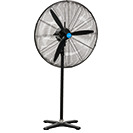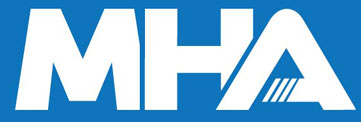Reducing Downtime with Proper Handling Equipment Maintenance
Date Posted:20 November 2024
By implementing a regular maintenance schedule, training employees, and using predictive technology, businesses can significantly reduce the chances of unexpected equipment failure
Downtime is a costly issue for many businesses, particularly those relying on material handling equipment to keep operations running smoothly. However, with proper maintenance of your handling equipment, you can significantly reduce unexpected breakdowns and improve overall productivity.
1. Create a Regular Maintenance Schedule
The first step to avoiding downtime is setting up a consistent maintenance routine. Every type of equipment—from forklifts to trolleys—needs regular checks and servicing. By having a documented maintenance schedule, you can prevent equipment from suddenly malfunctioning due to wear and tear. Include daily, weekly, and monthly checklists that cover the essential components of your material handling tools.
Maintenance tasks can include:
- Lubricating moving parts
- Inspecting hydraulic systems for leaks
- Checking for wheel damage on trolleys and carts
- Tightening loose bolts or screws
2. Train Employees on Proper Equipment Use
Misuse of equipment is another leading cause of unplanned downtime. Ensure all operators are trained not only in how to use the machinery but also in understanding its maintenance needs. Operators who are familiar with how equipment works will be able to identify early warning signs of malfunction.
Implement a formal training program that includes:
- Proper use of equipment
- Daily inspections by operators
- How to report malfunctions immediately
3. Perform Pre-Operation Inspections
One of the easiest ways to reduce downtime is to inspect equipment before use. A pre-operation inspection ensures that any problems are caught early before the equipment fails during critical operations. Employees should check brakes, wheels, steering, and any power-driven components before starting their shift.
4. Use Quality Replacement Parts
When equipment does break down, using substandard replacement parts can lead to more frequent repairs and longer downtimes. Always source high-quality parts from reputable suppliers to ensure the longevity and reliability of your equipment.
Additionally, keeping a stock of essential spare parts, such as belts, bearings, and tyres, can help you quickly address repairs without waiting for parts to arrive.
5. Implement Predictive Maintenance
Predictive maintenance uses technology to monitor the condition of equipment in real-time. Sensors can detect vibrations, temperature changes, or irregular operations, helping to predict when a failure might occur. This allows businesses to perform maintenance before a critical failure happens.
For example, a forklift's hydraulic system can be fitted with sensors to monitor pressure levels. If the system detects an anomaly, the equipment can be taken out of service for repairs before it breaks down.
6. Address Wear and Tear Immediately
Over time, all equipment experiences wear and tear. However, ignoring minor issues can lead to more severe breakdowns. For example, a trolley with a wobbly wheel might seem like a small problem, but if left unaddressed, it could cause the entire trolley to malfunction during operation.
Employees and supervisors should be vigilant and proactive in repairing small issues as soon as they arise. This will help extend the lifespan of your material handling equipment and reduce unexpected downtime.
7. Keep Equipment Clean and Well-Lubricated
Dust, dirt, and debris can easily accumulate in machinery, leading to blockages, overheating, or unnecessary wear. Regular cleaning and lubrication are essential maintenance practices that keep equipment running smoothly.
Proper cleaning should involve:
- Removing dust and debris from moving parts
- Cleaning out any filters
- Lubricating gears, chains, and wheels regularly
Using the right lubricants and cleaning agents designed for your specific equipment is also vital for maintaining optimal performance.
8. Use Data to Improve Maintenance Procedures
Modern maintenance systems allow you to track and analyse equipment performance data. By reviewing past breakdowns, repair logs, and maintenance schedules, you can identify trends and areas where improvements can be made. This data-driven approach ensures your maintenance team is proactive rather than reactive, minimising downtime caused by repeated failures.
9. Outsource Complex Repairs
While minor repairs and maintenance can be handled in-house, outsourcing more complex repairs to professionals ensures that the job is done right. Professionals have the tools, experience, and expertise to fix advanced mechanical or electrical issues, which can save you time and prevent further damage.
10. Consider Upgrading Outdated Equipment
No matter how well you maintain your equipment, outdated machinery will eventually need to be replaced. Newer models often come with enhanced safety features, better energy efficiency, and lower maintenance costs. If your equipment is frequently breaking down despite regular maintenance, it may be time to consider investing in newer technology.
Reducing downtime through proper maintenance of material handling equipment is crucial for maintaining productivity and profitability in any business. By implementing a regular maintenance schedule, training employees, and using predictive technology, businesses can significantly reduce the chances of unexpected equipment failure. Keeping equipment clean, addressing wear and tear early, and outsourcing complex repairs will also contribute to smoother operations.
With a proactive approach to maintenance, businesses can not only minimise downtime but also extend the lifespan of their material handling equipment, ensuring a safer and more efficient workplace.
































































































































 Trolleys & Hand Trucks
Trolleys & Hand Trucks Cage Trolleys
Cage Trolleys Cleaning Carts & Trolleys
Cleaning Carts & Trolleys Construction Trolleys
Construction Trolleys Custom Trolleys
Custom Trolleys Hand Trucks & Dollies
Hand Trucks & Dollies Laundry/Linen Trolleys
Laundry/Linen Trolleys Lifting Trolleys
Lifting Trolleys Order Picking Trolleys
Order Picking Trolleys Panel Cart Trolleys
Panel Cart Trolleys Platform Trolleys
Platform Trolleys Powered Trolleys
Powered Trolleys Shelf & Tiered Trolleys
Shelf & Tiered Trolleys Shopping Trolleys
Shopping Trolleys Stainless Steel Trolleys
Stainless Steel Trolleys Tool Trolleys
Tool Trolleys Utility & Service Carts
Utility & Service Carts Lifting & Handling Equipment
Lifting & Handling Equipment Forklift Attachments
Forklift Attachments Jib Attachments
Jib Attachments Lifting Hoists & Pallet Hooks
Lifting Hoists & Pallet Hooks Load Skates & Tow Tugs
Load Skates & Tow Tugs Manual Stackers & Lifters
Manual Stackers & Lifters Pallet Jacks
Pallet Jacks Pallet Lifters
Pallet Lifters Pallet Rotators & Dispenser
Pallet Rotators & Dispenser Powered Pallet Trucks & Electric Lifters
Powered Pallet Trucks & Electric Lifters Scissor Lift Trolleys and Tables
Scissor Lift Trolleys and Tables Conveyor Equipment
Conveyor Equipment Conveyor Frames & Stands
Conveyor Frames & Stands Roller & Skate Conveyors
Roller & Skate Conveyors Ladders & Access Equipment
Ladders & Access Equipment Container & Yard Ramps
Container & Yard Ramps Ladders & Step Stools
Ladders & Step Stools Work Platforms & Crane Cages
Work Platforms & Crane Cages Drum Handling Equipment
Drum Handling Equipment Drum Storage & Bunding
Drum Storage & Bunding Drum Trolleys & Lifters
Drum Trolleys & Lifters Forklift Drum Handling
Forklift Drum Handling Waste Handling & Bins
Waste Handling & Bins Bin Lifters & Tippers
Bin Lifters & Tippers Plastic Waste & Wheelie Bins
Plastic Waste & Wheelie Bins Steel Waste & Tipping Bins
Steel Waste & Tipping Bins Waste Carts
Waste Carts Dangerous Goods Storage & Spillage
Dangerous Goods Storage & Spillage Aerosol Cans Storage Cages
Aerosol Cans Storage Cages Bunded Pallets & Storage
Bunded Pallets & Storage Corrosive Goods Storage Cabinets
Corrosive Goods Storage Cabinets DG Storage & Trolleys
DG Storage & Trolleys Flammable Liquid Cabinets
Flammable Liquid Cabinets Forklift Gas Storage Cages
Forklift Gas Storage Cages Site Storage
Site Storage Spill Kits
Spill Kits Shelving & Storage Equipment
Shelving & Storage Equipment Stillage & Transport Cages
Stillage & Transport Cages 750 Series Cage Configurations
750 Series Cage Configurations Heavy Duty Cabinets
Heavy Duty Cabinets Heavy Duty Shelving
Heavy Duty Shelving Mega Bins & Pallets
Mega Bins & Pallets Packing & Workbenches
Packing & Workbenches Parts Trays & Stor-Pak Bins
Parts Trays & Stor-Pak Bins Pegboard & Louvre Panels
Pegboard & Louvre Panels Plastic Bins & Crates
Plastic Bins & Crates Plastic Handling Solutions Bins
Plastic Handling Solutions Bins Plastic Pallets
Plastic Pallets Stack & Nest Bins
Stack & Nest Bins Pallet Racking Accessories
Pallet Racking Accessories Workplace Equipment
Workplace Equipment Modular Workbenches
Modular Workbenches Electric Height-Adjustable Workbenches
Electric Height-Adjustable Workbenches Floor Matting
Floor Matting General Workplace Equipment
General Workplace Equipment Industrial Weighing Scales
Industrial Weighing Scales Packaging Machinery
Packaging Machinery Stationery Cupboards
Stationery Cupboards Storage and Stillage Cages
Storage and Stillage Cages Tool Trolleys
Tool Trolleys Tooling Cabinets
Tooling Cabinets Workshop Fans and Coolers
Workshop Fans and Coolers Safety Barriers, PPE & Signage
Safety Barriers, PPE & Signage Barriers & Bollards
Barriers & Bollards First Aid Equipment
First Aid Equipment Gloves, Knives and PPE
Gloves, Knives and PPE Signage
Signage Cleaning & Site Supplies
Cleaning & Site Supplies Cleaning Equipment
Cleaning Equipment Cleaning Trolleys
Cleaning Trolleys Rubbish Bins
Rubbish Bins Signs & Traffic Supplies
Signs & Traffic Supplies Construction Equipment
Construction Equipment Construction Trolleys
Construction Trolleys Waste Handling
Waste Handling General Site Equipment
General Site Equipment Concrete Equipment
Concrete Equipment Site Storage
Site Storage Lifting Equipment
Lifting Equipment Verdex Specials
Verdex Specials









